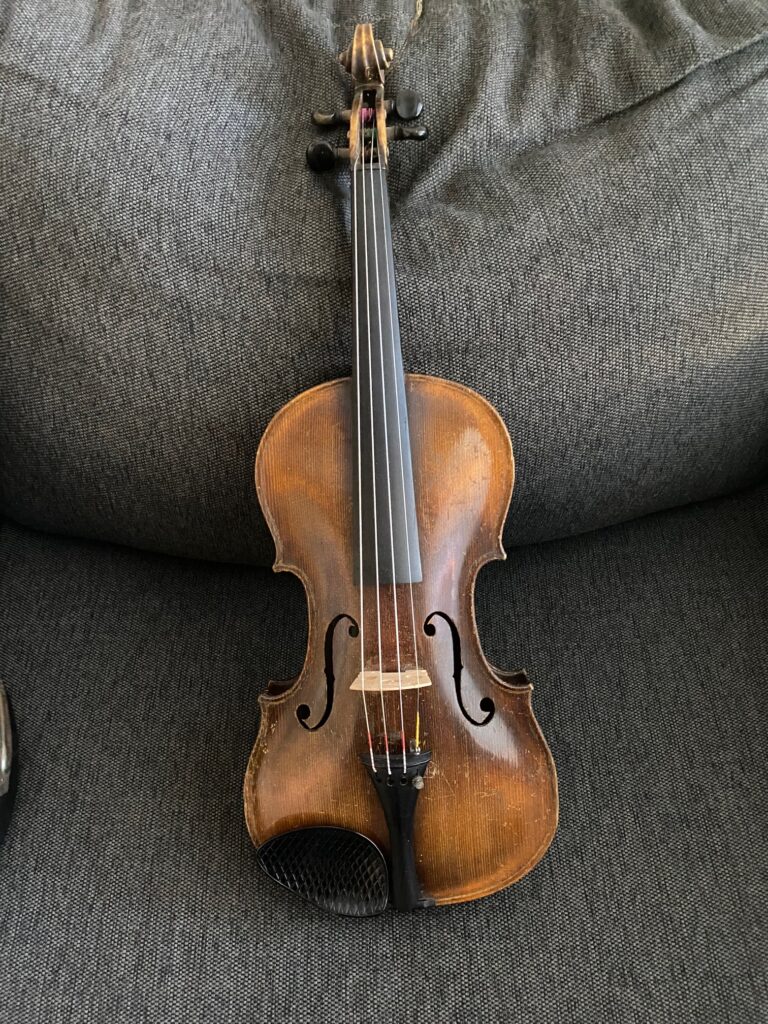The Red Rocks Music Festival offered Sedona a special concert performance, “From Bach to Broadway,” on Thursday, April 25, at the Sedona Conscious Living Center, performed by festival founder and violinist Moshe Bukshpan and pianist Lali Breen.
In collaboration with the Arizona Jewish Historical Society and the Center for Jewish Philanthropy, Bukshpan performed three of the afternoon’s selections on a Violin of Hope, one of the string instruments belonging to Jewish musicians who survived the Holocaust.
This particular violin belonged to Max Diamant of Przemysl, Poland, and is now on exhibit at the Cutler-Plotkin Jewish Heritage Center in Phoenix.
Bukshpan opened with a selection of four movements from one of Johann Sebastian Bach’s suites of dances. Playing from memory, with his surest execution in the faster moments of the suite, his emphasis of the emotive shifts of the music was most effective in the sorrowfulness of the sarabande, while the gigue almost hinted at Handelian opera.
From Bach, Bukshpan and Breen leapt quickly over to Broadway, starting off with a medley from “Fiddler on the Roof,” which was highly conversational with lots of character development and a good demonstration of soloist-accompanist union. They followed it with the theme from “Schindler’s List,” the high first part of which Bukshpan made sound appropriately tortured. “Shalom” from “Milk & Honey” followed, and in this selection, the piano took the lead rather than the violin.
Next up was another and more familiar suite of lively Bach dances, which nevertheless sounded very different as a duet. The opening and closing portions of the gavotte and rondeau were very un-Bach-like, almost Victorian, but the composer made sure to remind his listeners exactly who he was in the B section, signing it with his recognizable style. Bukshpan and Breen also took a tempo in the minuets that would have been a bit on the slow side for dancing.
Buksphan then switched to the Diamant violin for his final three selections, “Jerusalem of Gold,” “Over the Rainbow” and Leonard Cohen’s “Hallelujah.” The vintage instrument exhibited a purer, smoother tone than Bukshpan’s violin, with fewer overtones, from which the anguish of the chords emerged delicately.
In the Cohen work — in which Bukshpan asked the audience to sing the chorus — the violin supplied a vocal line of anguished shrillness, while “Over the Rainbow” came off as strikingly reflective of its period of composition when played as a piano-violin duet.
Bukshpan remarked after the performance that when he has performed for Holocaust survivors, “Over the Rainbow” has often been one of their favorite selections.
The Red Rocks Music Festival will return with additional concerts on Oct. 19 and 26 and Nov. 2, featuring Bukshpan as well as violinists Paula Lastra-Cancela and Asi Matathias, cellist Janet Horvath, bassist Catalin Rotaru, pianists Wan-Ting Yu and Matthew Graybil and mezzo-soprano Wan Zhao.

The Diamant Violin
Made around 1870, the Diamant violin is one of 70 Jewish-owned Violins of Hope that survived the Holocaust. Max Diamant, a Jewish boy living in Poland during World War II, escaped from a train en route to the Nazi concentration camp at Belzec, where his parents, brother and sister were murdered. His Polish Catholic friend, Stefania “Stefi” Podgórska Burzminski, who had worked for his mother, and her younger sister Helena concealed him and 12 other Jews ranging in age from 10 to 50 in their apartment attic behind a false wall.
Przemysl was liberated by the Soviet Red Army two years later; only 300 of the approximately 16,000 Jews in the Przemysl area survived.
Diamant married Stefi, changed his name to “Josef Burzminski,” the name of a dead Polish man whose identity he assumed to protect himself from pogroms, and recovered the violin, which his brother Chaim had also played. In 1961, the couple immigrated to the United States. Diamant died in 2003. His daughter Krystyna Diamant loaned the violin to the Cutler-Plotkin Jewish Heritage Center in Phoenix.
The Burzminski home at 3 Tatarska Street, Przemysl, in southeastern Poland, is now a Holocaust museum.